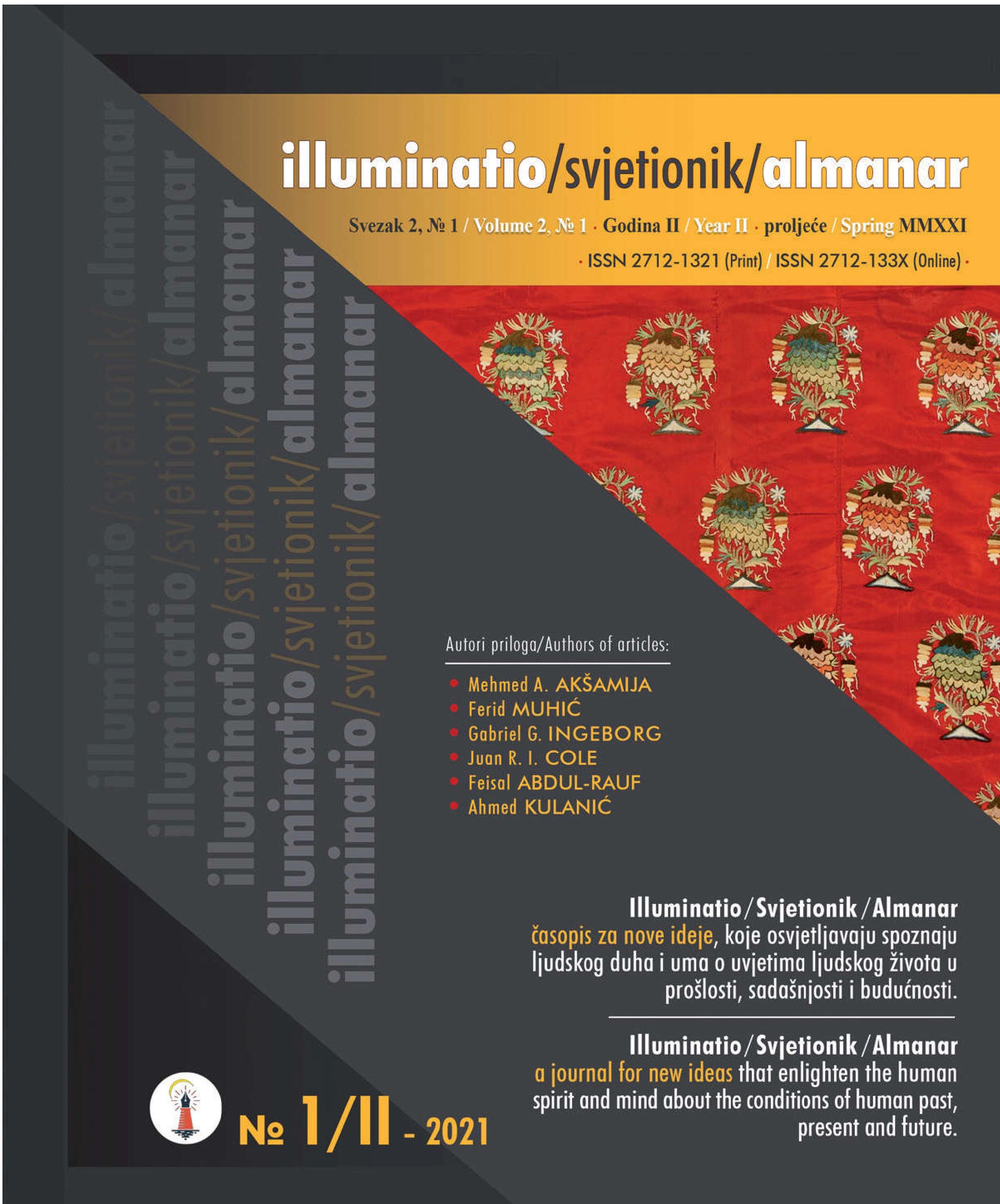QADAR/SINA´AT – „islamska umjetnost“ prvi dio
QADAR/SINA´AT – „Islamic art“ first part
Author(s): Mehmed A. AkšamijaSubject(s): Islam studies, History of Art
Published by: Centar za dijalog - Vesatijja
Keywords: islam;art;QADAR/SINA´AT;homo islamicus;globalization of culture;
Summary/Abstract: This analysis is aimed at initiating a discussion of some parts of the history of what is declared or titled „Islamic art”, within the critical and theoretical framework of both Occidental-Western and (some) Muslim perspectives. The analysis and establishments of limits in line with the prevailing authorities will contribute to the vital modalities of qadar/ṣināʿat discourse which are resolutely Islamic and in line with their source (ar. al-marjaʿ or al-maṣdar). Particular attention is drawn to advocating differences, due to Occidental-westernized academic efforts to ignore the spirit of unity and the self-re ective Islamic constant of qadar/ṣināʿat discourses and impose the arti cial dichotomy of the sacral and profane, and due to paradigmatic views on the evaluation of the creative (aestheticized) achievement of the originator/designer of representation, (i.e. homo islamicus) as absolute western ownership. On the other hand, the aestheticized activity of homo islamicus within the conscious recognitive and cognitive productive-re ective orientation has a very speci c historical existence. If the well-known saying of Jacques Derrida – the well known Postmodernist, ‘il n’y a pas de hors-texte’ („there is nothing outside the text”) can be applied to the title „Islamic art”, we can raise the question as to whether the aestheticized activity of homo islamicus exists or not. It seems that the proper question related to the modalities of qadar/ṣināʿat discourse should be ‘qu'est-ce qu'il y a de hors-texte’ („what is there outside the text?”).We will also encounter inappropriate terms, such as the use of the term decorative as an equivalent to ornamental or arabesque for aestheticized expression of an in nite sample, as well as the classi cation into central and marginal artistic productions, (i.e. the center of the Eurocentric cultural power and its so-called periphery). Attention is drawn to the Occidental-westernized positioning of the theory of arts at the top of creative maturity, which is ultimately aimed at the unique hegemony of the „New World”, (i.e. the submission and „cultivation” of any non-European and non-westernized entity), and particularly of the creative existence within the classical tradition of Islamic culture (ar. al-thaqāfah al-islāmiyyah) and Islamic civilization (ar. al-ḥaḍārah al-islāmiyyah or al-tamaddun al-islāmiyy).Finally, it should be noted that the Occidental-westernized manner of academic thinking in this area, and of any other theories applied within the borders of index order and taxonomy (including the concept of current globalization), also represent systematic patterns of authority, control and evaluation, and thus the exclusion of others.However, such a form of imposing a linear or cyclic way of interpretation still faces very real challenges typical of writing a global „history of art” and the complete absence of understanding other and different forms of creative expression.
Journal: Illuminatio/Svjetionik/Almanar
- Issue Year: 2/2021
- Issue No: 1
- Page Range: 50-125
- Page Count: 76
- Language: Bosnian, English

